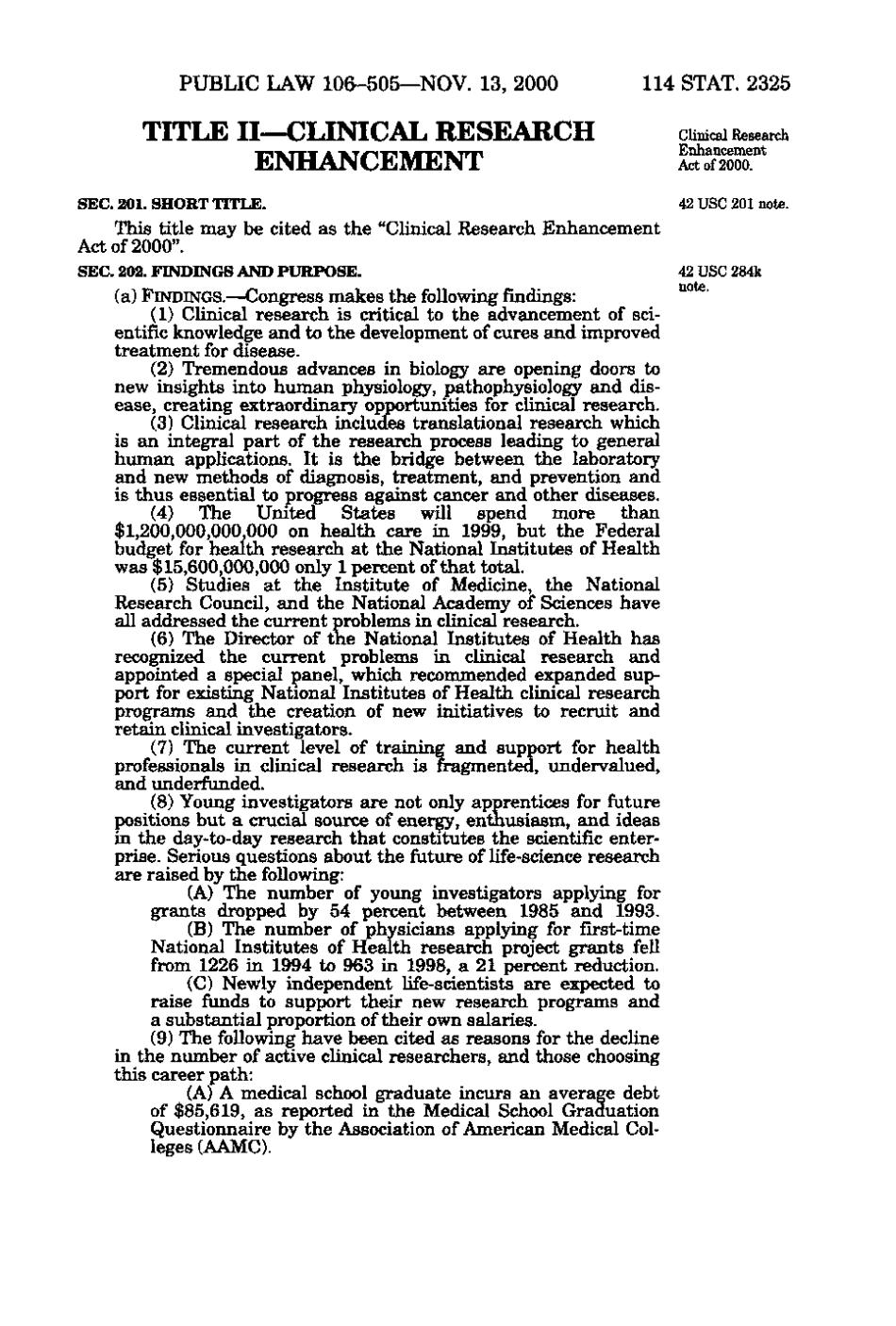PUBLIC LAW 106-505—NOV. 13, 2000 114 STAT. 2325 TITLE II—CLINICAL RESEARCH ENHANCEMENT Clinical Research Enhancement Act of 2000. SEC. 201. SHORT TITLE. 42 USC 201 note. This title may be cited as the "Clinical Research Enhancement Act of 2000". SEC. 202. FINDINGS AND PURPOSE. 42 USC 284k (a) FINDINGS. — Congress makes the following findings: (1) Clinical research is critical to the advancement of scientific knowledge and to the development of cures and improved treatment for disease. (2) Tremendous advances in biology are opening doors to new insights into human physiology, pathophysiology and disease, creating extraordinary opportunities for clinical research. (3) Clinical research includes translational research which is an integral part of the research process leading to general human applications. It is the bridge between the laboratory and new methods of diagnosis, treatment, and prevention and is thus essential to progress against cancer and other diseases. (4) The United States will spend more than $1,200,000,000,000 on health care in 1999, but the Federal budget for health research at the National Institutes of Health was $15,600,000,000 only 1 percent of that total. (5) Studies at the Institute of Medicine, the National Research Council, and the National Academy of Sciences have all addressed the current problems in clinical research. (6) The Director of the National Institutes of Health has recognized the current problems in clinical research and appointed a special panel, which recommended expanded support for existing National Institutes of Health clinical research programs and the creation of new initiatives to recruit and retain clinical investigators. (7) The current level of training and support for health professionals in clinical research is fragmented, undervalued, and underfunded. (8) Young investigators are not only apprentices for future positions but a crucial source of energy, enthusiasm, and ideas in the day-to-day research that constitutes the scientific enterprise. Serious questions about the future of life-science research are raised by the following: (A) The number of young investigators applying for grants dropped by 54 percent between 1985 and 1993. (B) The number of physicians applying for first-time National Institutes of Health research project grants fell from 1226 in 1994 to 963 in 1998, a 21 percent reduction. (C) Newly independent life-scientists are expected to raise funds to support their new research programs and a substantial proportion of their own salaries. (9) The following have been cited as reasons for the decline in the number of active clinical researchers, and those choosing this career path: (A) A medical school graduate incurs an average debt of $85,619, as reported in the Medical School Graduation Questionnaire by the Association of American Medical Colleges (AAMC).
�
